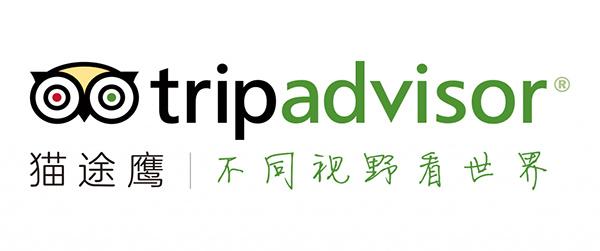Chanhe Hui Ethnic Town in Chanhe Hui District, Luoyang
Location and Administrative Division
Laoxiang Hui Ethnic Township (Laoxiang Huizu Xiang, 老乡回族乡) was formerly known as Chaohe Hui Ethnic Township and is located in the northern part of the Lucheng District (洛阳市瀍河回族区), Luoyang City (洛阳市), Henan Province (河南省), China. It is bordered by Baima Temple Town (白马寺镇) in the east, Luoshan Town (邙山镇) in the west, the Luo River (洛河) to the south, and Mangshan Ridge (邙山岭) to the north. The administrative area covers 20.44 square kilometers.
Historical Background
- September 1958: Chaohe Ethnic Township was dissolved, and Hongqi Commune (红旗公社) was established.
- July 1965: The Mapo (马坡) and Xusheng (旭升) Agricultural Communes merged to form the Chaohe Agricultural Commune.
- September 12, 1968: Chaohe Agricultural Commune was renamed Chaohe Commune.
- March 1984: The name was changed back to Chaohe Hui Ethnic Township.
- 2023: Laoxiang Hui Ethnic Township was restructured into Wenli Subdistrict (问礼街道).
Administrative Divisions
As of the end of 2011, Laoxiang Hui Ethnic Township administered nine communities and two administrative villages:
- Communities: Xieyao (下窑), Chengbei (城北), Tadong (塔东), Taxi (塔西), Xusheng (旭升), Shangyao (上窑), Zhongyao (中窑), Shijiawan (史家湾), Mapo (马坡)
- Administrative Villages: Panlongzhong (盘龙冢), Xiaoli (小李)
By June 2020, the township included twelve communities:
- Xieyao Community (下窑社区)
- Xusheng Community (旭升社区)
- Taxi Community (塔西社区)
- Tadong Community (塔东社区)
- Shijiawan Community (史家湾社区)
- Xiaoli Village Community (小李村社区)
- Mapo Community (马坡社区)
- Panlong Community (盘龙社区)
- Shangyao Community (上窑社区)
- Zhongyao Community (中窑社区)
- Chengbei Community (城北社区)
- Hengda Green Oasis Community (恒大绿洲社区)
The township government is located at 52 Qiming North Road, Xieyao Community (下窑社区启明北路52号).
Geography
Location
Laoxiang Hui Ethnic Township is situated in the northern part of the Lucheng District. It is bordered by Baima Temple Town (白马寺镇) to the east, the Luo River (洛河) to the south, Luoshan Town (邙山镇) to the west, and Mangshan Ridge (邙山岭) to the north. The administrative area covers 20.44 square kilometers.
Terrain and Climate
- Terrain: The township features a piedmont plain with a general elevation that decreases from north to south. The average elevation is 129.10 meters, with the highest point being the Donghan Taizhong (东汉太子冢) in Panlongzhong Village (盘龙冢村) at 158 meters and the lowest point in Nankeng Jinjia Street (南坑金家街) at 129.10 meters.
- Climate: Laoxiang has a continental semi-arid monsoon climate with distinct seasons. The weather characteristics include:
- Spring: Dry, windy, and low rainfall.
- Summer: Hot and rainy.
- Autumn: Mild and cool.
- Winter: Dry, cold, and with little snowfall.
The average annual precipitation is 606.60 mm, with a maximum snow depth of 11 mm. Average annual sunshine duration is 2,251.50 hours, with a sunshine percentage of 51%. The frost-free period averages 215 days annually, with a frost period of 150 days.
Hydrology
The water system in Laoxiang Hui Ethnic Township is part of the Luo River system. The Chaohe River (瀍河) flows south into the Luo River, which crosses the township from west to east. The total length of the river channels within the township is 10.4 kilometers.
Land Resources
The township has a cultivated area of 7,192 mu (亩).
Population and Ethnicity
- End of 2011: The total population was 32,869, with 28,169 residing in urban areas, resulting in an urbanization rate of 85.70%. There were also 834 floating residents. The demographic distribution was:
- Males: 16,831 (51.21%)
- Females: 16,038 (48.79%)
- Under 14 years old: 8,546 (26%)
- Aged 15–64: 18,808 (57.22%)
- Over 65 years old: 5,515 (16.78%)
Ethnic composition:
- Han Chinese: 18,876 (57.4%)
- Hui: 13,695 (41.7%)
The birth rate was 8.59‰, the death rate was 3.90‰, and the natural population growth rate was 4.69‰. The population density was 1,217.37 people per square kilometer.
- End of 2017: The permanent population was 37,188.
- End of 2018: The registered population was 36,197.
Origin of the Name
Laoxiang Hui Ethnic Township is named after the Chaohe River (瀍河) that flows through the township, with Hui ethnic residents concentrated in the area.
Historical and Cultural Sites
Laoxiang Hui Ethnic Township is home to several historical and cultural sites, including:
- Confucius’s Visit to Zhou: A site related to Confucius’s visit during the Zhou Dynasty.
- Mangshan Imperial Tombs: A historical site featuring ancient imperial tombs.
Transportation
How to Get There
- By Train: Take a train to Luoyang City (洛阳市). From Luoyang, you can take a bus or taxi to Laoxiang Hui Ethnic Township.
- By Bus: Long-distance buses to Luoyang are available from major cities. From Luoyang’s bus station, local buses or taxis can take you to the township.
- By Car: If driving, follow the signs to Luoyang and then proceed to Laoxiang. The township is accessible via major roads connecting it to Luoyang.
Travel Tips
- Local Cuisine: Sample Hui ethnic cuisine, which features lamb dishes and traditional Hui-style noodles.
- Best Time to Visit: Spring and autumn are ideal times to visit due to the favorable weather conditions.
- Cultural Respect: Respect local customs and traditions, especially when visiting ethnic communities.
- Accommodation: Look for local guesthouses or hotels in Luoyang, as the township may have limited accommodation options.
Ensure to plan your trip in advance and check local transportation schedules to make your visit to Laoxiang Hui Ethnic Township enjoyable and comfortable.











